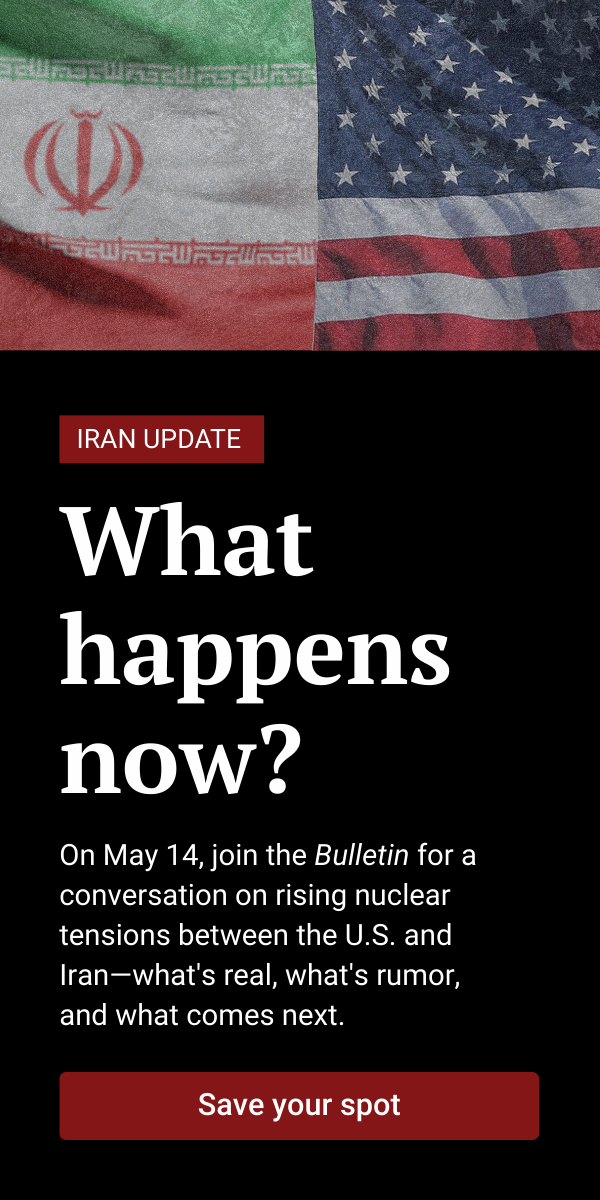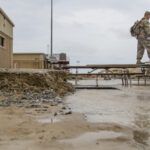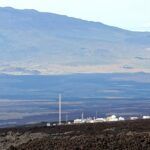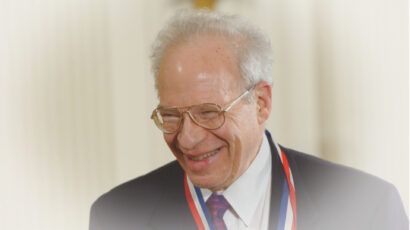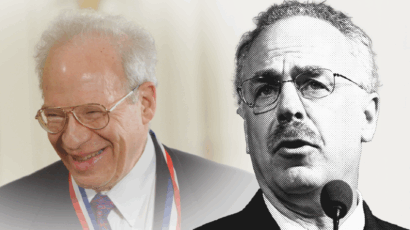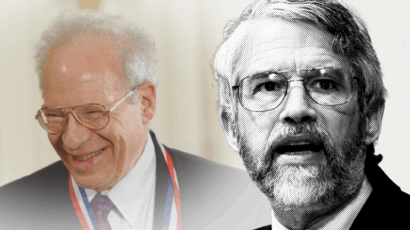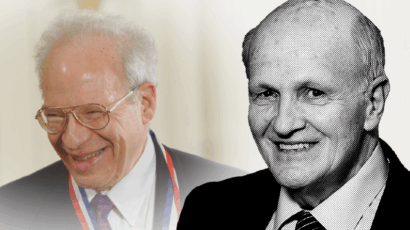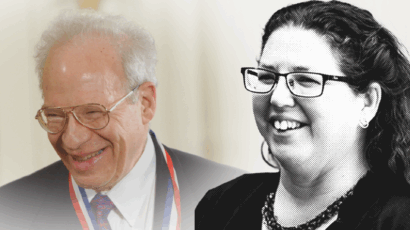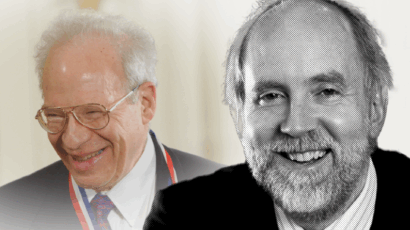A former EPA assistant administrator on US environmental policy in the age of Musk and Trump
By Jessica McKenzie | February 10, 2025
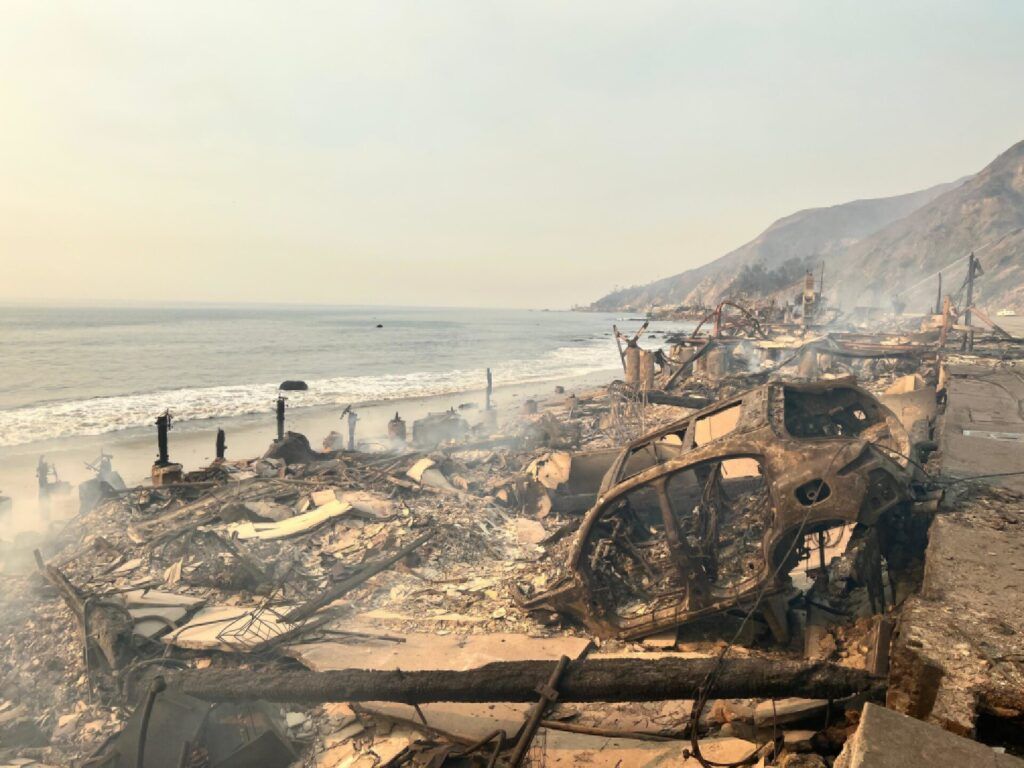 At the same time that the Trump administration is trying to slash the number of employees working at the EPA, the president has also demanded that they expedite cleanup from the Los Angeles wildfires, and finish the job in just 30 days. (Photo: Cal Fire/Flickr)
At the same time that the Trump administration is trying to slash the number of employees working at the EPA, the president has also demanded that they expedite cleanup from the Los Angeles wildfires, and finish the job in just 30 days. (Photo: Cal Fire/Flickr)
Last Monday, Elon Musk bragged that he “spent the weekend feeding USAID into the wood chipper.” Is the United States Environmental Protection Agency next?
A three-prong assault by the Trump administration is already taking shape, aimed at staffing, funding, and regulations.
According to a ProPublica analysis, more than 300 career employees at the Environmental Protection Agency (EPA) have already left the agency since the election. This includes lawyers, engineers, biologists, toxicologists, emergency workers, and water and air quality experts. Last week, nearly 170 employees in the Office of Environmental Justice and External Civil Rights were placed on paid administrative leave. Many others are being encouraged to resign or threatened with dismissals.
President Trump signed an executive order in his first week in office pausing funding disbursements awarded through the Inflation Reduction Act or Bipartisan Infrastructure Law, and although courts have intervened to stop the spending freeze, funding for EPA projects has still not been released.
And by all accounts, Lee Zeldin, the new EPA administrator, is poised to begin rolling back a suite of environmental regulations, touching on everything from meatpacking plant pollution and fertilizer chemicals to coal ash contamination and greenhouse gas emissions from power plants.
To better understand everything going on at the agency and how these actions will reverberate over the next four years (and beyond), the Bulletin reached out to Mary Nichols, a former EPA assistant administrator and current professor at the UCLA Emmett Institute on Climate Change and the Environment.
Editor’s note: The following interview has been edited for length and clarity.
Jessica McKenzie: Could start by talking a little bit about your background and how the EPA has factored into your work?
Mary Nichols: I’m an environmental lawyer. I started practicing environmental law in 1971. After graduating from Yale Law School, I moved to California and immediately began focusing on air pollution with a public interest law firm called the Center for Law and the Public Interest, and there I started to file some of the first lawsuits under the federal Clean Air Act of 1970. So I’ve been working with that piece of legislation and the EPA really ever since.
McKenzie: And these lawsuits were directed at the EPA?
Nichols: We were suing EPA, yes. I had the opportunity in 1993 to join the Clinton administration. I was appointed by President Clinton as the assistant administrator of EPA in charge of air and radiation. I was the administrator for that program from ‘93 through ‘97. During that time, some of the most important things we did were to set new air quality standards for fine particles, which had never been regulated before and which are the most toxic and have the worst health effects, and set emission standards for passenger cars and trucks. [We] started the acid rain trading program, which was first created by the Clean Air Act amendments in 1990 and implemented a bunch of new requirements, like mandatory in-stack monitoring for major industrial facilities and power plants. So that was my mission at EPA.
I left to come back to California to run a foundation that was working in the environmental area,and eventually ended up back at the California Air Resources Board under Jerry Brown, starting first under Arnold [Schwarzenegger], who brought me back to run the climate program for California after the legislature passed the first ever comprehensive climate bill in the United States, which was in 2006. From there, I spent the next 10 years at CAR. Since then, I’ve been working as a faculty member at UCLA law school and their Emmett Climate Center, and serving on various boards, etc, all in the general area of of climate.
McKenzie: ProPublica reported this week that 300 career employees have already left the EPA since the election, and more are being either encouraged to depart or threatened with layoffs or dismissals. That might not seem like a huge number when you consider that there are more than 15,000 employees in EPA across the country. But it still seems like a pretty significant brain drain. I was wondering if you could talk about the impacts of that for the agency.
Nichols: First of all, EPA is not larger than it was prior to the first Trump [administration] slashing of employment. There’s been a loss of personnel overall at EPA, despite the fact that the agency’s responsibilities don’t get smaller. In fact, Congress has historically given them more work to do through through legislation and through the budget process. So EPA is not overstaffed by any means. Most of its staff are deployed outside of Washington, D.C. Unlike many other federal agencies, EPA does the bulk of its work with states and local governments, and at the regional level, dealing directly with the sources of pollution, rather than trying to just send out regulations from D.C. The folks in the D.C. offices where I was based develop the national regulations, like an ambient air quality standard, which is applicable anywhere in the country. But the regional office level is where the staff are dealing directly with the states and industries that are subject to those regulations and issuing permits and handling enforcement actions. So it’s a very regionalized program, and at the regional offices, there are people with law degrees, of course, in their legal divisions, and engineering degrees, working directly with their counterparts in the regulated community. It’s really only at the level of the auto industry that the EPA headquarters office is working more directly with the industry, because those regulations are applicable to industries that are working at the national level and operating at the national level.
The point of that longish explanation is to say that EPA is not in a position to lose staff without it having a real impact on their ability to do their job. I don’t know the names of people who have left in this current round. There was a big wave of departures in the first Trump years of people who were eligible for retirement, really, for the first time in EPA history, because it’s a relatively young agency. So it didn’t have a lot of very senior staff people, but those who were able to retire chose in much higher numbers than they would have in a friendlier administration to leave under Trump, without any buyout inducements. There was no incentive other than the incentive of getting out of a place where they were beginning to feel their work was not valuable, and they were having a hard time doing their jobs.
Things built back up quite a bit under under President Biden. One of the things that Michael Regan, who was his appointee as the administrator of EPA, focused on was improving employee morale, mainly by demonstrating a commitment to pursuing the agency’s legislative agenda, legislatively given mission, in a way that made use of good science and was fair and was focused on the areas in the country that had the worst problems, which tended to be places where there’s a concentration of poor people and also of major polluters. So the environmental justice focus really sharpened under the Biden administration. Employees were particularly active in rural areas and in southern areas, along Cancer Alley in Mississippi and Louisiana—places where there were concentrations of poor people who were also subject to some of the worst pollution—and also in inner city areas, as in Flint, Michigan, where they were able to successfully address a longstanding, very serious water pollution problem and to expedite cleanup of hazardous waste sites and Superfund sites. Under Biden Assistant Administrator Michal Freedhoff they chose to move forward on a number of chemicals, like PFAS, which had been just ignored, really, in the past. It was a time when EPA, despite not being able to build back all the resources that they had once had, did get some additional resources and use them in a very aggressive, positive way.
McKenzie: One of Trump’s first executive orders was to terminate, to the maximum extent allowed by law, all environmental justice offices and positions. Nearly 170 at the Office of Environmental Justice and External Civil Rights were placed on paid administrative leave yesterday. Can he do that?
Nichols: Probably not. There are people who are suing him, including the union that represents many of the career employees at EPA. I know it’s being challenged, along with many other actions that purport to be able to fire people or put them on leave at that level, as a way to actually kill a program that the president doesn’t like. It certainly is a violation of the separation of powers. And I know that there are lawsuits that have been filed and more will be filed. I obviously can’t say how they will turn out, but so far, judges who’ve been presented with these kinds of issues have been quite willing to at least issue temporary restraining orders.
It really depends what the employees decide to do with those kinds of orders. Will they simply stop coming to work? I also don’t know the details of some of the reassignments that supposedly have been made, where people have been ordered to show up for work someplace else than where they normally work. And then there’s this whole fight about people coming into the office, although for many employees at EPA, their office is a car. They’re out actually doing monitoring in the field, not showing up in an office building every day.
McKenzie: One thing I was trying to untangle yesterday when I was preparing for this interview is to sort of figure out how much of the environmental justice piece of EPA work had congressional backing versus just discretionary policy or commitments from the executive branch.
Nichols: There’s a long line of cases that say that if an agency’s budget includes an item, and Congress chooses to fund that, they have authorized that program. It’s not the same as new legislation that says, “you’ll do more for environmental justice,” but it constitutes congressional authorization of the program.
McKenzie: Amid all this crisis and upheaval, the EPA has also been asked to do this grueling, very fast cleanup of the Los Angeles wildfires. I read that they’ve been given just 30 days to clear debris from 14,000 structures. And that after the fires in Lahaina, Hawaii, it took four months to clear a fraction of that number. Could you talk about how having all of this uncertainty and chaos on one end will impact the EPA’s ability to do their work in Los Angeles on an accelerated timeline?
Nichols: Well, the EPA is on the ground here in Los Angeles, and they’ve deployed contractors as well as their own staff. They’re proceeding at a very rapid clip. They are short-circuiting some of their traditional public consultations. So for example, they simply commandeered sites to move stuff to where they will then be sorting out the hazardous materials from those that can go to a more conventional landfill. And that produced a lot of public reaction, as you can imagine, in the places where the where the waste is going, but they persevered, and that definitely helps to speed up the process, if you don’t have to talk to the public about what you’re doing before you do it. So you could argue that was a good thing.
Thirty days, however, is based on nothing. There’s no historical or technical reason to think that they can do this in 30 days. And nobody knows whether, if they’re not quite finished, they’re going to just be told to pack up and leave, or whether there will be some extension allowed. There’s already a strong move in places where there are people who have the wealth to do this, for people to bring in their own private contractors to clean up their particular lot, their home site, and that is being allowed, is being encouraged. The fires touched a number of different communities, and even in the Palisades, which is on the coast and has more wealthy residents than many other places in Los Angeles, not everybody can afford to do that. And of course, they shouldn’t have to do it, because the EPA should be doing this job for them.
McKenzie: You have experience working both on the federal side of things and then also at the state level. I was wondering if you could talk a little bit about how, over the next four years, upheaval or chaos, or a smaller workforce at the EPA, how that trickles down to regulatory agencies at the state level?
Nichols: It’s different in different states. There are certainly many states that have a much smaller environmental protection program of their own and that mostly rely on the federal government to enforce all the air, water, waste laws and provide the protection.
California has a big investment in environmental quality. We take our environment seriously in California. California Air Resources Board and the local air districts have as much invested in terms of personnel, activities, enforcement, regulation, permitting, as the federal government does. The loss of EPA grants and EPA support is not unnoticed. It definitely makes a dent, and it’s important. But it’s not going to stop the California programs in any of the major environmental areas.
In the case of regulating motor vehicles, EPA and CAR have always worked very closely together and sometimes divided up responsibility, so the federal agency did more in terms of developing new regulations on trucks, and California did more of the work on passenger cars. And if the federal government loses the ability to do their part, that will, over a pretty short period of time, in a matter of a few years, have a big impact, and it will show up as more pollution in people’s communities, more and more pollution at the ground level, than there would have been otherwise. But that kind of a slowdown in itself isn’t going to make things worse, probably, for a couple of years.
What will make things worse is if the federal government decides to try to roll back all the existing rules that have previously been approved. And that’s where we, the state of California and many other allies, are prepared to fight back and are fighting back.
McKenzie: But the more immediately vulnerable states and regions will be those that don’t have as robust of—
Nichols: If you happen to live in Louisiana—I’m just picking on them because they get a lot of attention—you will immediately notice a reduction in the level of attention that’s being paid to whether you’re going to have clean water.
McKenzie: You said in your email to me that you’re looking for ways to support the EPA staff in this dreadful time. What does that look like for you?
Nichols: I’ve been talking with various other former EPA appointees about reaching out to EPA staff, encouraging them not to leave, and supporting the lawsuits that are already in process, to defend against the illegal firings or administrative leaves, to challenge the fake offers of buyouts that are not supported with any actual money or legal authority to give that money. People who left in expectation that they were going to receive the things that the letters said they were going to get are going to face a very rude awakening very quickly if they haven’t already figured it out. If they’re eligible to apply for retirement, of course they’ll get—I shouldn’t say, “of course,” anything, because who knows what these people will try—but at least on paper, they’re entitled, if they retire, to get whatever their benefits are that they’ve earned. But in terms of people who weren’t eligible for retirement or taking early retirement and were told they would, for example, get paid for the next eight months—this is not something that, as of this moment, the Trump administration has any ability to actually make happen.
McKenzie: Is there anything else that you want to add?
Nichols: I mean, the scrubbing of the words “climate change” from federal websites, which they did the last time around, is now back. We know that websites are being taken down. Scientific information is being suppressed. We also know that grants that were in the works, unless the money has already been delivered into the grantees account, they’re trying to pull that money back, and again, we don’t know if they’ll succeed. There will be litigation on all of those fronts as well, but that’s what they’re attempting to do, which would really cripple many state and local organizations that are dealing with the emissions that cause climate change.
One of the reasons why this is especially difficult is that Trump said when he was a candidate that he had no intention of cutting back on strong protections for clean air and clean water. He wanted the “cleanest air, the cleanest water,” etc. There is no way you can draw a bright line between the activities—burning of petroleum, burning of coal, burning of natural gas, any kind of combustion—that are going to be causing both greenhouse gas emissions and also emissions that are harming people’s health on the ground. It’s one of those areas where it’s a phony distinction, and if they try to enforce their anti-climate prejudice, they’re going to end up inevitably hurting people’s health as well. Some of the same gasses that you’re talking about that are greenhouse gasses, like nitrogen oxides, are also direct, health-harming air pollutants. It’s just a smoke screen for cutting back on all protections for people and granting a free pass to the oil industry, primarily, which is already what Trump has said he’s planning to do, which is to encourage more production, more use of petroleum.
Together, we make the world safer.
The Bulletin elevates expert voices above the noise. But as an independent nonprofit organization, our operations depend on the support of readers like you. Help us continue to deliver quality journalism that holds leaders accountable. Your support of our work at any level is important. In return, we promise our coverage will be understandable, influential, vigilant, solution-oriented, and fair-minded. Together we can make a difference.
Keywords: EPA, Lee Zeldin, Trump administration, air quality, climate, emissions, water quality
Topics: Climate Change

